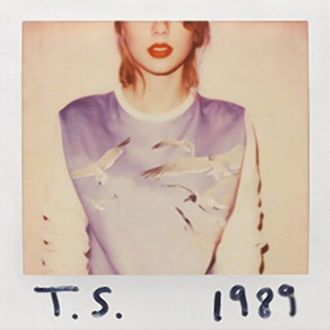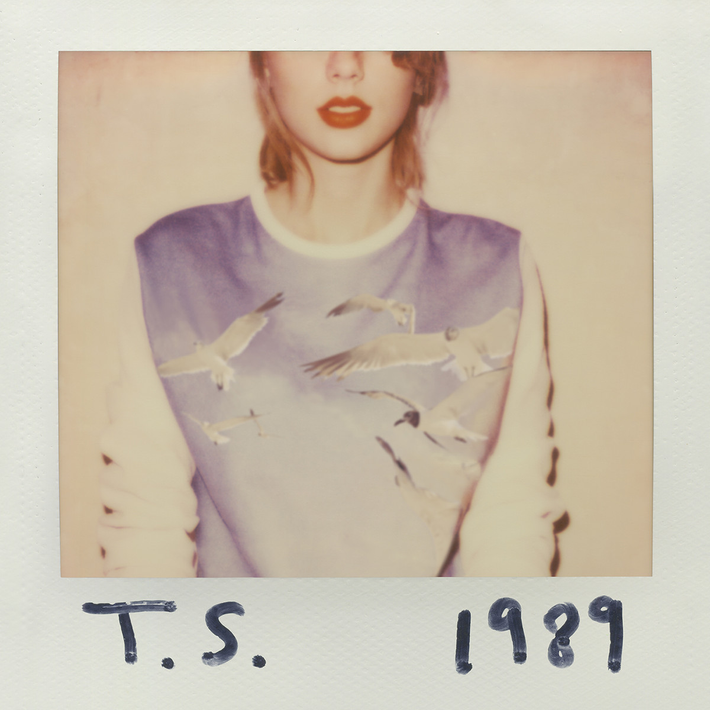
You have read about the in-jokes, the boyfriends, the inspirations, and even the actual songs. But we’re still going! Now Vulture presents a few thoughts about the 1989 album cover.
1. It’s a Polaroid* picture for a reason.
The week before the first single from 1989 dropped, Swift fake-leaked a photo on her Instagram feed showing an ‘80s Polaroid camera and a couple of boxes of film. A few sites briefly guessed that she was going to call the album Polaroid, and given that she has posed with one of those cameras before, she appears to be an enthusiast when it comes to this weird, old method of picture-taking. It does seem to fit with her brand: Her songwriting is about minutely documenting her life story, and until about 2002 or so — not to mention in 1989 — Polaroid pictures were a kid’s best way of doing that.

2. She didn’t fake it, but she definitely messed with it.
It doesn’t look like a digital photo that’s been put through a filter — it’s almost surely made with real analog film. But she did futz with the shape and proportion of the borders to fit a standard square album cover (never mind that everyone’s going to download it). Drop a real Polaroid next to it and you’ll see. Interesting, also, that her most electronic album to date has the most analog kind of picture — one of a kind, hard to copy — on its cover.
3. That asterisk: It’s not Polaroid film.
Polaroid stopped making its signature product in 2008, and production was shortly thereafter restarted by a small company called the Impossible Project. This looks like Impossible’s film, with its yellowish tone, high contrast, and distinctive palette. Charming as it is, Impossible’s project is a pain in the neck to use: If you shoot out in bright sun, you have to shield it as it ejects from the camera, otherwise your photo washes out. It also takes about 20 minutes to develop. This suggests that Taylor is not only an enthusiast; she is willing to put up with it, in order to create the perception of an effortless homey snapshot.
4. About that Vampire Weekend album …
Taylor has suggested that the idea for a Polaroid cover came from another CD. Chances are, it was Vampire Weekend’s Contra, released in 2010, which shows a young woman in an (’80s!) Polaroid photo on the cover. Interestingly, that photo caused a bunch of trouble for the band: Though Vampire Weekend had paid the photographer, the woman later surfaced claiming that she was a working model, that she had not signed the release bearing her name, and that she was owed a bunch of money. The band settled out of court. Haters gonna hate hate hate hate hate.
5. Why did Taylor cut off the top of her head?
The photo ends at nostril level, a framing is not only commonplace but approaching cliché levels in the book business; this Goodreads list notes 449 recent covers that look more or less the same way, their authors ranging from Erica Jong to Jane Austen. Quite a few commentators have noted the iffy-at-best gender-and-power dynamics at work there. The chopped-off face also has (accidental) precedent in ancient art, which can be evocative despite, or even because, the face is incomplete. Consider one of the great pieces in the Metropolitan Museum of Art’s Egyptian collection, this stone head from the 18th dynasty: Would your eye linger as long if the whole face were there? Probably not.
Half-headlessness is somewhat a surprising move for a young celebrity, whose face is usually a salable part of his or her personality. On the other hand, Taylor did show her red lipsticked pout, arguably her most recognizable feature.
6. That sweatshirt!
Questionable! Definitely anti-fashion fashion. But you can get your own, for $59.99 plus shipping.


